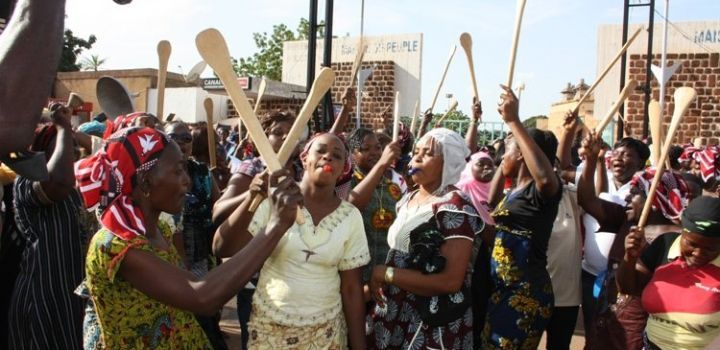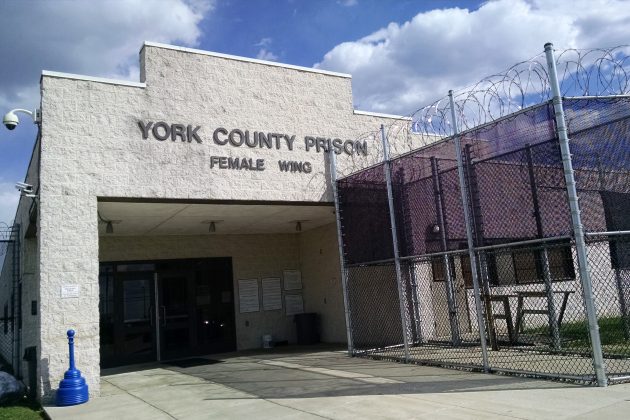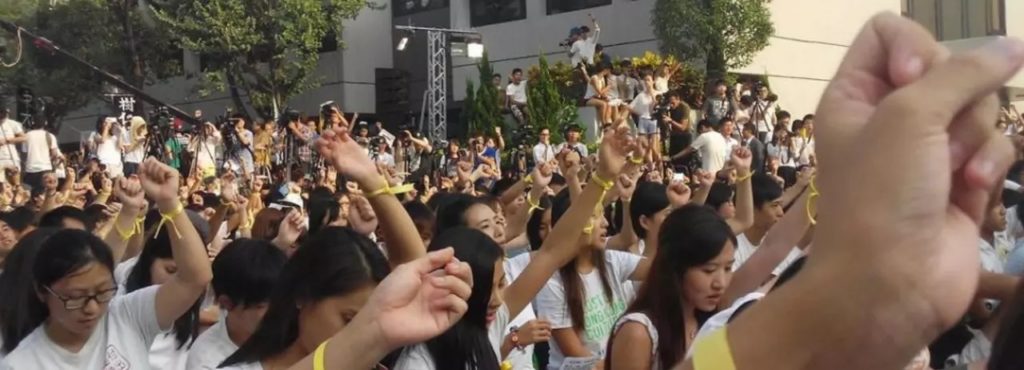
Burkinabé civil society, opposition forces, students, youth, workers, and women have been taking to the streets to protest a parliamentary move to extend the president’s 27-year rule. These demonstrations are as much about one-party rule as they are about one man. Since August, youth have been organizing, under the banner of Le Balai citoyen, the Citizen Broom. Many have spent their entire lives under the leadership of one man and they have had enough.
This week, the broom hooked up with the spatula.
On Monday, hundreds of women took to the streets of Ouagadougou. In their raised fists, they carried broomsticks, spatulas, and some carried pestles. Why spatulas?
As one demonstrator explained, “The spatula is the most important cooking utensil for women. It has a symbolic weight in our traditions. When it is used to hit a man, it’s a sacrilege; the consequences are disastrous and irreversible. Hitting a man with a spatula automatically undercuts his power, his virility, which he cherishes above all. This is the reason the women came out with spatulas. Because of the President’s monarchic tendencies, his refusal to hear anyone but himself, the women came with spatulas to warn him, to bring him back to reason.”
According to Juliette Congo, of the Movement of People for Progress, “We came out with our spatulas to give a warning to a man hell-bent on destroying our country … If Blaise Compaoré does not change his tune, the women of Burkina Faso will rise in civil disobedience!”
Cendrine Nama, 28, agreed, “Burkinabé women came out, armed with our spatulas, October 27, to say NO to a constitutional coup d’etat planned by those in power, with the complicity of the Deputies elected to represent the people. I am proud of my people who rise today. It’s time we took an active role in the decisions that affect us, for the people are sovereign.”
Germaine agreed and added, “The time for discussion is over. We want him to leave and leave us in peace. We, the women, we weep for our children, we weep for our nation, we weep for the fate and future of the Burkinabé people. We came out with our spatulas to show him that when a woman comes with a spatula, that says it all. We came into the streets with our spatulas because we are burning inside. The next time we will strip and come naked and cry on the head of Blaise Compaoré.”
On Monday, hundreds of women marched, chanted, carried spatulas, and sparked an uprising, a spatula uprising. On Tuesday, tens of thousands marched in the streets. On Wednesday, a general strike was called. And tomorrow … ?
(Photo credit: Fasozine.com)







